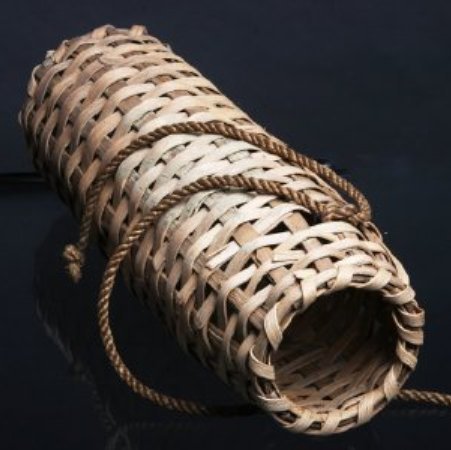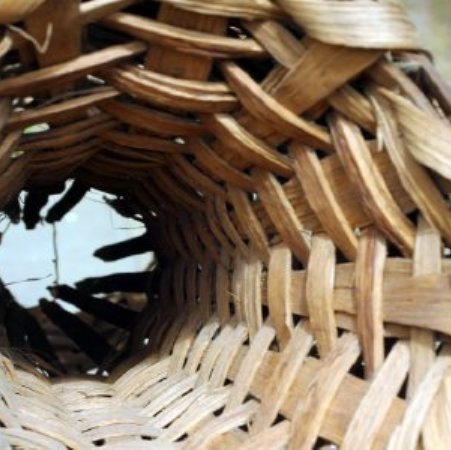Object Name:
Woven Eel Pot
Date:
1900s
Description of Object:
This woven eel pot is an example of early commercial eel pots used along the Chesapeake Bay. These pots are created by weaving wooden splints around a cylindrical mold.
About the Object:
This woven, basket style eel pot is an older form of a trap used by both Native Americans and Chesapekae Bay watermen. Woven eel pots are cylindrical in shape and are constructed using molds to guide the weaving process.They are similar in structure to the contemporary round eel pot made from wire mesh. The interior of the pot contains a funnel through which the eel cannot readily escape once it has advanced through the small end of the funnel. Watermen use a variety of bait when fishing for eels including soft-shell clams, razor clams, horseshoe crabs, and alewives. Once captured, the eels are either salted and used for crab bait or are shipped to Europe and Asia for human consumption.
More Information:
American Eels range from Greenland to Brazil. In February, mature eels return to the Sargasso Sea (Atlantic waters northeast of the West Indies) to spawn and then die. Females lay twenty to thirty million eggs that hatch into larvae that are carried by currents to areas along the Atlantic coast. Drifting larvae develop into "glass eel" then turn into the pigmented or "elver" stage at 2 inches, then move into freshwater rivers and streams, estuarine, and marine waters. Here the "yellow eels" mature for 3 to 40 years. "Silver eels" complete sexual maturation as they return to the Sargasso Sea.





